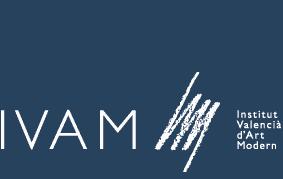La vista y la vision
dal 16/7/2003 al 12/10/2003
Segnalato da
16/7/2003
La vista y la vision
IVAM Instituto Valenciano de Arte Moderno, Valencia
Sight and vision. The first international exhibition devoted to the imagery of the eye in western art, the emblem of the Creator and of creators, through works ranging from the eye idols of the ancient East to video installations. It shows us that the eye, a sign of life and at the same time an organ endowed with a deadly power, divine image and means of contact with the divine, has always haunted the imagination of the artist.

(Sight and vision)
CURATOR
Pedro Azara
I. SIGHT AND VISION: INTRODUCTION TO THE EXHIBITION
THEME:
Osiris meant The eye on the throne; Ea, the Mesopotamian father god, meant The god with shining eyes; Zeus was The eye that sees all. Thus, since antiquity, the eye has been and still is a symbol of the principal gods. Unlike humans, the gods could have one or three eyes, like the Cyclopes, omniscient archaic Greek deities. The goddesses of the earth were adored in the form of an eye floating in the sky, or two expectant eyes placed on a body, as in the primitive Mediterranean eye idols. Even God the Father in Christianity was represented by means of a single eye inscribed in a triangle. The ever open eye evoked eternal life. With the dead, on the other hand, it wasx{2014}and isx{2014}the custom to close their eyes. The gods could not be looked at face to face: their circular gaze was too powerful. However, not all the deities looked on men kindly. The eyes of the Sirens or Medusa turned people to stone. The eye evoked the insidious gaze of invisible power. Even nowadays, amulets are used against the evil eye, to turn back harmful looks or to keep away envy (from invidere, to look badly). To pagan deities or to saints such as Saint Lucy, who protect against blindness and damage to the eyes, the faithful offered, and still offer, ex votos in the form of wide-open eyes.
The eye also symbolises the immortal part (the soul) in man. Worshippers in contact with the deity, and the dead who had attained immortality, such as the people shown in the portraits from El Fayum (Egypt) or Palmyra (Syria), opened enormous eyes. The image of the man-God, Christ, reveals a face with two large mirror-like eyes whose gaze redeems those who look into them.
The eye is the means of contact between man and his surroundings. Lovers gaze into each other's eyes and, according to Plato, see themselves overcome, redeemed by the god of love. Memory, the imagination, consciousness and all the faculties by which the human being escapes from his limitations and manages to see or recall past or future events have sometimes been symbolised by eyes.
The poets of antiquity had the gift of second sight. They intuited what was going to happen, or they recalled memorable events and sang of them. But the ability to see beyond human limits meant that they could not see what they had at hand: the possession of the eyes of the soul, or of a third eye, involved physical blindness, as the imaginary portraits of Homer show. Like the poet, the painter also was (and may still be) a wizard, incapable of finding his way among men, lost in his own dreams. His inner eyes are his most precious gift. Painters are artists because they are eyes.
SIGHT AND VISION is the first international exhibition devoted to the imagery of the eye in western art, the emblem of the Creator and of creators, through works ranging from the eye idols of the ancient East to video installations. It shows us that the eye, a sign of life and at the same time an organ endowed with a deadly power, divine image and means of contact with the divine, has always haunted the imagination of the artist.
II. OUTLINE OF THE EXHIBITION
I. THE EYE AND DEITIES
1. Beneficent deities:
a) The eye and the deity in antiquity: the eye of Horus (Egypt); Mediterranean eye idols (Mesopotamia, Palestine, Anatolia, Italian Peninsula, Iberian Peninsula); the eye of the Greek deities who educated men: Dionysus, Argus (the guardian of Apollo's cattle), Athene, the Cyclopes.
b) The eye of the deity in Christianity: the Trinity; the angel; saints who protect against disorders of the eye (Saint Lucy).
2. Maleficent deities:
a) The Sirens, Medusa; Big Brother.
b) Protection against the evil eye: amulets against grim looks.
c) Offerings for the protection granted: ex votos in the form of eyes.
II. THE EYE AND THE SPIRITUAL IN THE HUMAN BEING
1. The eye as a symbol of eternal life in antiquity:
a) The Mesopotamian worshipper.
b) Egyptian and Palestinian sarcophagi and funerary masks.
c) Funerary portraits from Palmyra (Syria) and El Fayum (Egypt).
2. The eye as a symbol of eternal life in Christianity:
a) Veronica's veil.
3. The eye and the faculties of the soul:
a) The eye and the expression of the passions of the soul.
b) The eye and contact with one's fellow-beings and the environment.
c) The eye as a source of life: the vulva-eye.
d) The eye and memory; the eye and (bad) conscience.
III. THE EYE AND THE CREATIVE ARTIST
1. The visionary poet: blindness and the eyes of the soul (Homer).
2. The visionary painter: Picasso and the blind Minotaur.
3. The eye, reverie and inner vision.
4. The eye, symbol and self-portrait of the artist.
IVAM- Institut Valencià d'Art Modern
Guillem de Castro 118, 46003 Valencia
Teléfono: 963.867.680
Fax: 963.921.094



